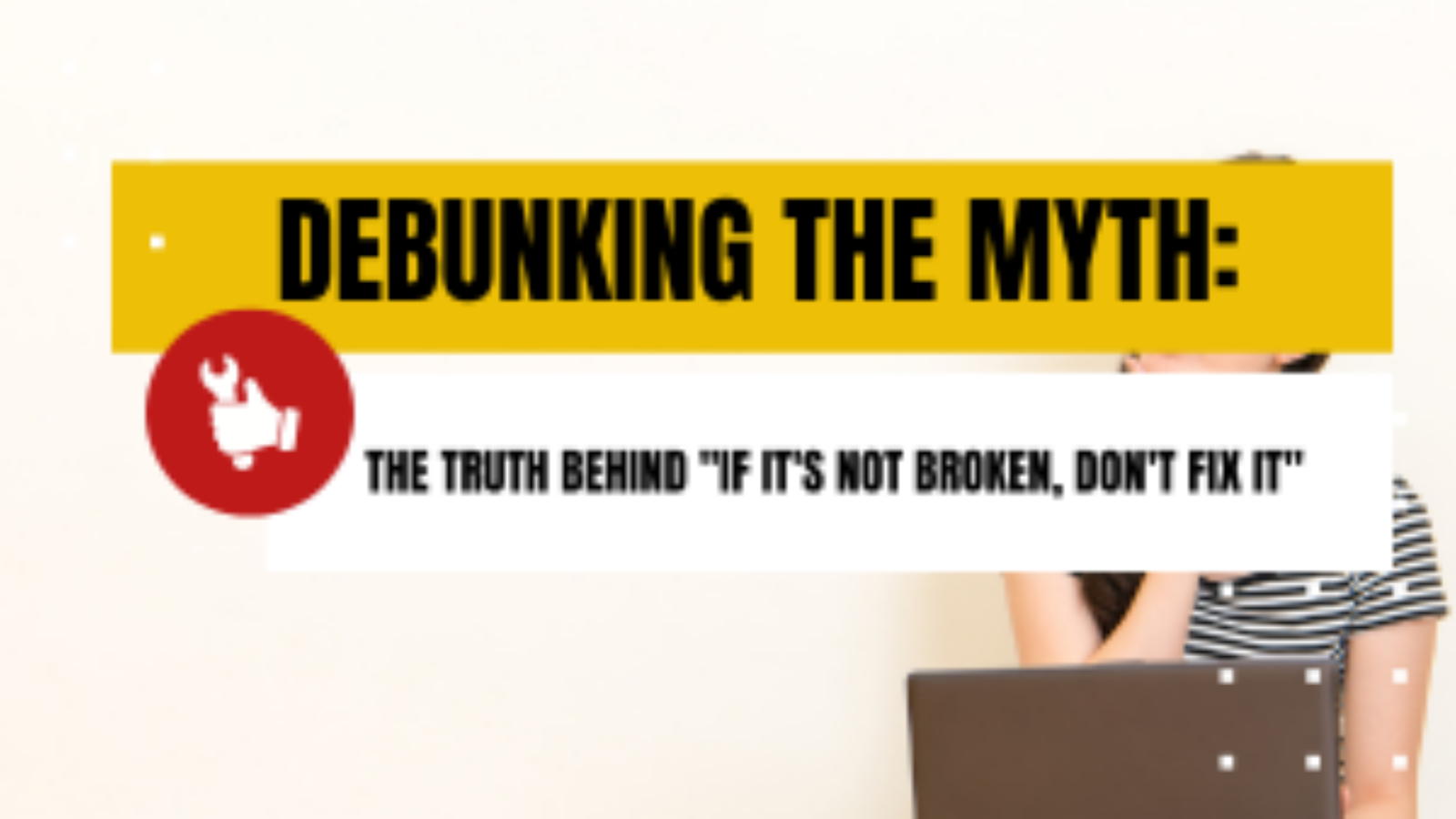As entrepreneurs, we often find ourselves at a crossroads when it comes to making decisions for our businesses. One commonly used phrase that enters the conversation is, “If it’s not broken, don’t fix it.” But is blindly going along with this principle always the best approach? I want to dive into the different mindsets surrounding this phrase and weigh their pros and cons to determine whether it holds true in the wacky world of entrepreneurship.
The Case for “If It’s Not Broken, Don’t Fix It”:
Optimizing Time and Resource:
One argument supporting this idea is that entrepreneurs can allocate their time and resources more efficiently by focusing on what’s already working. Suppose a particular strategy or process gives you positive results. In that case, there might be little incentive to invest in changing it, which allows entrepreneurs to channel their efforts into other areas that require attention, potentially maximizing overall productivity and profitability.
Avoiding Unnecessary Risks:
Sticking with what’s proven and established minimizes the risks associated with experimenting and introducing changes. Entrepreneurs can maintain stability and consistency while avoiding “unnecessary disruptions.” This can be super beneficial for businesses in mature industries or those with limited resources, where the margin for error is narrower.
The Argument for Embracing Change:
Innovation and Competitive Advantage:
Business continually evolves, and it evolves FAST. Staying stagnant can leave entrepreneurs vulnerable to being outpaced by competitors. Embracing change allows for innovation, which is crucial for sustaining a competitive advantage. Continuously seeking improvement and exploring new possibilities can lead to breakthroughs that will transform their businesses and propel them to new heights.
Adapting to an Evolving Market:
Markets change, consumer preferences shift, and technologies advance. Raise your hand if you’re sick of hearing about AI every day? If entrepreneurs rely solely on the “if it’s not broken” mentality, they risk falling behind or becoming irrelevant. Proactively assessing and adapting to evolving market dynamics can help entrepreneurs position themselves at the forefront of industry trends, remaining agile and responsive to customer needs.
My Final Verdict:
While the phrase “If it’s not broken, don’t fix it” carries some merits, sticking to that limiting mindset can limit growth potential and hinder long-term success. The entrepreneurial journey is characterized by continuous learning, adaptation, and innovation. Striking a balance between preserving what works and embracing change is essential.
As entrepreneurs, we must evaluate each situation carefully. If a strategy or process delivers optimal results, it may be wise to focus on scaling and refining it further. However, when market conditions or customer demands evolve, it’s crucial to be open to exploring new avenues, challenging the status quo, and continuously seeking opportunities for improvement.
Ultimately, successful entrepreneurs understand that the key lies in adopting a growth mindset, where the pursuit of excellence and constant evolution are core principles. By embracing change when necessary while respecting the value of what’s already working, entrepreneurs can chart a path toward sustained success in an ever-changing landscape.
“If it’s not broken, don’t fix it” can be a valuable guideline in certain contexts. However, entrepreneurs can’t let complacency or fear of change hinder their growth potential. Striking a balance between leveraging what works and embracing innovation is the key to thriving in today’s competitive business world.
What do you think?

